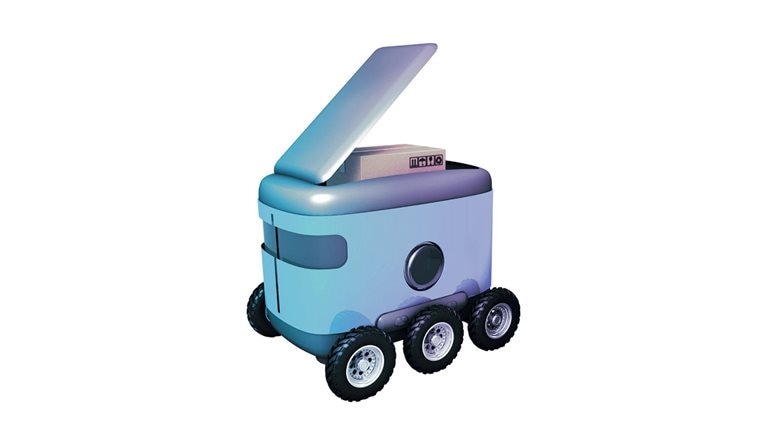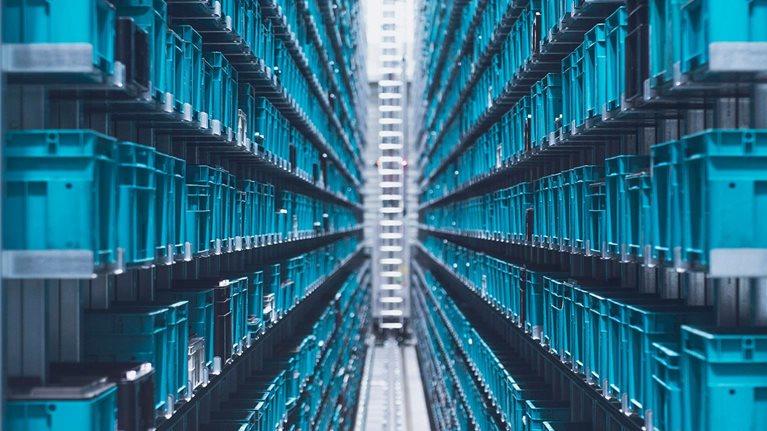Wayfair has come a long way from its humble origins in (you guessed it) a college dorm room. Today, the company sells $8.6 billion in furniture and home goods to 19 million active customers in Europe and North America. In 2019, the company and its logistics partners expect to ship more than 30 million parcels; many will pass through its network of 15 warehouses (12 in the United States, 1 in Canada, and 2 in Europe), 7 cross-docking facilities, and 40 last-mile delivery depots. Connecting these millions of dots is the job of Sascha Hower, Wayfair’s head of supply chain, Europe. In November 2019, Mark Staples of McKinsey Publishing spoke with Hower in McKinsey’s Boston office. The following is an edited version of their discussion.
McKinsey: Let’s start by talking about what you think the parcel-delivery landscape might look like in 2030. What do you see as the biggest changes between now and then?
Sascha Hower: E-commerce has recently seen double-digit growth in many categories, including home goods. As millennials and Gen Zers—people who are mobile and online all the time—start making homes for themselves, we expect the category’s already tremendous growth to take off. We foresee the market tripling by 2030 as the new generations start buying new kinds of products and buying the things they need more frequently.
McKinsey: As they increase their purchases, are customers also going to expect to get their goods faster? Do you see one-day delivery as the emerging standard? Or even two-hour delivery?
Sascha Hower: Speed has been a major accelerator for e-commerce. I think that trend will continue, towards same-day delivery—not for all goods, but for many. Maybe even furniture; I wouldn’t rule it out. There are different kinds of furniture, right? If you buy a wardrobe, you probably won’t need it same day. But how about decor or some wall art or a guest bed, because you have visitors coming, maybe unexpected guests? There will be a few categories like this where you wouldn’t expect same-day delivery, but with customers becoming used to it and even educated into it, why not?
It’s not only speed—customers’ service expectations will also rise by 2030. Take home furniture. These goods are bulky. They’re heavy. They’re prone to damage. And today, they’re often delivered by transportation companies that have tended to do 100 percent of their business in B2B. That’s very different from delivering not only to a retail customer, but going into somebody’s home, their personal space.
That’s why for beds, wardrobes, and other sorts of bulky furniture, which make up a good share of our business, 90 percent are moved through Wayfair’s controlled transportation network and 70 percent are delivered through our own last-mile facilities. People like having bulky items delivered into their room of choice, and for some furniture, they want assembly. For the rest—and for what we call the small-parcels business—we rely on third parties.
Looking ahead, based on our historic growth and the rise in e-commerce, the portion of items that we deliver, both small and large parcels, will grow significantly.
McKinsey: That means you’re going to need access to more customers’ homes. But younger customers, especially, don’t want to wait at home for a delivery. How are you thinking about that challenge?
Sascha Hower: That’s why it’s so important today to deliver a customer experience in which the customer feels taken care of. In the future, for small parcels, I think we’ll see more of unattended delivery—more deliveries to neighbors, and new networks of parcel lockers—or alternatives to redirect your parcel to another store or even the trunk of your car. On large parcels, our in-home teams already have a lot of unusual skills. We’re trying to create an ideal customer experience, end to end—from first click, to selecting the product, down to the delivery. When our people go into homes, they’re not delivery drivers. They are ambassadors for Wayfair, and we need to train our people accordingly to deliver that experience, to create that trust between us and the consumer. In the future, we’re going to need even more of that.
McKinsey: That’s a heady set of challenges for companies like Wayfair. It’s going to be much harder to meet customer expectations for a broader range of products, delivered faster, in a way that makes customers feel valued and cared for. Do you see any technologies that are going to help?
Sascha Hower: We do. This could be things like machine-learning applications that help predict better when exactly the parcel gets delivered where. We have so many pieces of information on every parcel. At every single point in the delivery, we have all these events. Across our system, we have data on hundreds of millions of events every single day. Our job is to figure out how to best use them to offer a best-in-class customer experience, to be precise in predicting where the parcel goes, to be precise in knowing in case something might go wrong, to add flexibility for the customer.
Intelligent routing, a type of software that helps integrate returns or ad hoc collections into delivery schedules, will also become even more important. Returns are a well-known feature of e-commerce. A customer emails—“I have a return. Can you please pick it up?”—which was not planned into the delivery route. With new technologies, both machine learning and smart routing software, we will be able to. We can think a little bit ahead, even wait a little bit longer to make the pickup, which is easier for an insourced delivery company like Wayfair. For a classic third-party logistics transport company, this is just a cost. If you’re thinking customer experience, it’s a very different way of approaching the world. If the customers are happy, they will come back. They’ll buy more.
McKinsey: We’ve talked a lot about the microeconomics of delivery. Let’s step back and talk at the macro level about the industry. How do you see the ecosystem of parcel delivery developing over the next ten years? And how will Wayfair fit in?
Sascha Hower: Right now, there are a few players that basically own the market. With our size and our growth, we have an opportunity to take what we are doing for our large-parcel furniture items, fine-tune it for customers’ expectations, and extend that service for more of our items. Only a few players have that size.
The market for B2C delivery has developed phenomenally. But any third-party logistics provider will have to take care of multiple customers. For these providers, it’s about creating a standardized, cost-efficient product that serves the majority of their customers. To create a new service, it will need to serve a multitude of customers, a multitude of purposes. With growth, that will probably happen, which is why overall service levels and customer happiness will probably go up. But when you want very specific solutions, it’s tough to get those from a third party.
McKinsey: Currently, there’s a rural/urban divide in delivery services; cities have access to many more products on same-day or two-hour delivery. How do you see the industry evolving to address that gap?
Sascha Hower: If you look back at the short history of e-commerce, the density of urban areas was once similar to where the rural areas are today—it’s not that rural areas are adding population, but rather rural customers are ordering more packages. That’s also true in cities, but in the countryside especially, every additional parcel delivered actually helps a lot in the cost position.
So that just accelerates the availability of e-commerce everywhere. From a logistics perspective, the growing density of rural areas makes it much cheaper to deliver. So the coverage and also the speed of delivery in rural areas—maybe not same-day, but next-day—will clearly grow to be on par with where cities are today.
McKinsey: Does that affect your warehousing and footprint strategy?
Sascha Hower: The footprint strategy of warehouses goes hand in hand with delivery. Let’s talk about same-day. If I want to deliver an item the same day, it’s not only about being able to do the transportation to the customer within a few hours, but the item needs to be available. So I need a much denser footprint of items to sell same-day. I can do that with lots of owned infrastructure, or by going much further with omnichannel, to use retail outlets and integrate a classic offline-to-online setup.
McKinsey: To make omnichannel work, will you need stronger partnerships with traditional retailers? How are you thinking about that?
Sascha Hower: Home goods is an exciting but challenging category for e-commerce. They’re big, they’re awkwardly shaped, they’re easy to break—and the ecosystem is not as developed as it is for the classic e-commerce categories such as books and fashion. Partnering with all players is essential, and Wayfair has been doing this since its start. We have a mighty supplier base of 11,000 companies, whom we work with closely, across countries. And, of course, we also have strong relationships with our transportation partners.
McKinsey: So far, it seems like a rosy picture. You expect tremendous growth in e-commerce and in your categories. New technologies are coming online to help you manage challenges. What concerns you about this scenario? Black swans are by definition impossible to predict, but could you have a go?
Sascha Hower: One thing that might have an impact on the future of delivery is congestion in cities. As e-commerce grows and more vans and trucks roll into cities to make deliveries, will that still be allowed? Or will there be levies or charges for that, which would make deliveries much more expensive? If it comes to that, will customers accept higher costs?
I think the answer will mostly come from better optimization of flows into cities to reduce congestion as much as possible. And that goes back to things like intelligent routing software, being very precise in planning with customers to know when they’ll be home, so that you go there only once.


